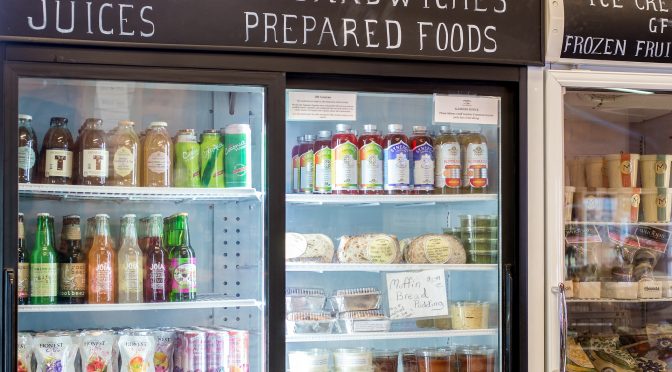Opinion: Misleading claims about 'green' products and what to do about them
By Gaelle Gourmelon; article from WorldWatch Institute
You’re standing at the store, a bottle of shampoo in each hand. Your gaze circles from one label to the other, and your mind runs 10 simultaneous comparisons to decide which bottle you’ll bring home. Blue is, after all, your favorite color. And this label does have a nice flower on the side.
But, you’re a rational shopper, and you won’t let feelings get the best of you. You’ve done your research on climate change and water pollution. You know that your purchases have impacts. One bottle claims to be “organic.” The other “all-natural.” Which one to choose? You linger in the shampoo aisle, indecisive, for much too long.
Sound familiar? You’re not alone.
Shoppers around the world are confused. Marketers have noticed our interest in “green” products and are eager to pile temptations into our shopping carts. The problem isn’t just that it’s making our shopping decisions harder. It’s that companies are often deceiving us—saying what they think we want to hear about “saving the planet” without actually backing up their claims.
THE GREENWASH TRICK
Misleading shoppers by making unclear, false, or manipulative claims about the environmental impacts of a product or company is often called “greenwashing.” One 2010 survey found that over 95 percent of “greener” products used some sort of greenwashing technique. That’s bad for three reasons.
First, it obviously takes advantage of you, the shopper, and makes you spend more money based on a false assumption that the extra dollars are worth the difference. Second, greenwashing gives companies a way to hide their more nefarious acts. A large corporation could, for example, advertise its organic cotton diaper line to showcase its environmental commitment, all while cranking out millions more disposable plastic products that still choke up landfills.
Third and most important, greenwashing gives consumers a false sense of positive impact, encouraging shoppers to buy more stuff. How could you be hurting the Earth if your sunscreen, for example, is “environmentally friendly”?
The reality is that no product produced today is yet “good” for the planet. Some products are just less bad. Any claim beyond that is dishonest.
SPOTTING GREENWASHING
There are several different ways that products and corporations can use greenwashing techniques to trick you:
-
There is no proof to back up the claim.
Vague claims, like “natural” and “green,” are hard to prove and not easy to enforce. That’s why marketers love them, sometimes to the point of designing sneaky seals and symbols that make the claim look legitimate. As an example, look at soda product 7Up’s attempt to convince you that their product is “natural.” The commercial makes you feel good, but a deeper look makes you wonder what their definition of “natural” is. Is the drink’s high-fructose corn syrup “natural” just because (many processing steps ago) it was part of a (highly genetically manipulated) corn plant? Hmm…
7Up’s “all natural” commercial makes a vague claim that all of its flavors are natural. With images like this, who could question them? You could—that’s who.
-
The claim is nothing to brag about, really.
This one requires a little closer inspection. Brands sometimes brag about things that are already required by law, hoping you won’t notice that their claim is essentially meaningless. Picture it this way: you walk into someone’s house and see their impressive collection of trophies and medals. Upon closer inspection, you realize that all the shiny objects are only participation awards for mandatory school activities. Everyone has them (but most people just don’t feel the need to showcase them). You walk out much less impressed.
One easy example of this greenwashing technique is when companies brag about having CFC-free (chlorofluorocarbon-free) products. That’s great, since CFCs once destroyed much of the ozone layer. But the truth is that CFC production in the United States has been banned since 1995. So… nice job not breaking the law, I guess?

This Coppertone sunscreen includes a “no CFCs” symbol. That’s not a big deal, really, since CFCs have been banned in the United States for years.
Other times, companies get behind the lowest-possible industry standard, secure a stamp of approval, and pat themselves on the back. This is more like walking into the afore-mentioned trophy room and seeing that all of the awards are for 11th place honorable mentions at the local spelling bee. Good effort, but maybe not worth bragging about. This is a little like, some argue, the Rainforest Alliance certification seen on products like bananas, coffee, and chocolate. For a product to receive the certification, only 30 percent of its content has to actually meet the certification’s criteria. Not exactly the highest standard of environmental and social commitment.

One of the certifications that McDonald’s has aligned with is the Rainforest Alliance certification, arguably one of the least rigorous sustainability certifications.
-
Lies, lies, lies.
Luckily, this greenwashing technique is the least common because companies get actual penalties for getting caught. In 2010, for example, chicken giant Tyson Foods was sued for claiming that its chickens were “raised without antibiotics.” It turns out that the company was injecting chicken eggs and feeding the chickens with antibiotics. Tyson settled for $5 million, including $50 cash for anyone who brought forward a proof of purchase of their products.

Tyson had to settle after making claims that its chicken was raised without antibiotics when, well… it was raising its chickens using antibiotics.
-
The claim doesn’t look at the big picture.
Wow! You’ve spotted a new bottle of lotion that says it’s “eco-friendly” thanks to its recyclable packaging and sleek design. Now you can feel good about throwing 10 of these in your shopping basket, can’t you? Not quite. The reality is that being merely recyclable is not enough to make it truly Earth-friendly. In the United States, less than 10 percent of plastics were actually recycled, causing a strain on resources, landfill space, and oceans. Sure, it’s better than the old bottle design. But calling recyclables “eco-friendly” is too big a claim considering the inefficiency of our recycling systems and the scale of plastic pollution.

Nivea has designed “eco-friendly” lotion bottles with “environmentally friendly” labels. A step in the right direction, but a claim that goes a little too far about how earth-friendly disposable plastic bottles are.
-
Claims that try to make you look the other way.
Sometimes, companies do genuinely environmentally friendly things. But when the “green” behavior comes from a notoriously “ungreen” company or industry, you have to wonder: are they hiding something?
Think of General Motors’ late 1980s promotional stunt. The motor vehicle company touted that it would plant a tree for every car in the Geo series that it sold. But, behind the scenes, General Motors was fighting the government’s efforts to increase fuel efficiency standards. A tree’s worth of good can’t really outweigh this carload of environmental damage.

General Motor’s Geo line of cars was marketed to people with a penchant for the outdoors by promising that a tree would be planted for every purchase.
To see more examples of greenwashing or to report misleading advertising, you can visit Greenpeace’s Stop Greenwash website or the Greenwashing Index.
STOPPING GREENWASHING
Now you know the various shades of green used by marketing professionals. But don’t get discouraged. The reason why “green” products are flooding the market is that consumers are voicing their interest in buying better things. It’s progress. Companies generally improve their green marketing as consumers demand more transparency. The trick is to encourage companies and policymakers to support giving you, the consumer, more information.
Ready to tackle greenwashing head-first? Here’s a 3 step greenwashing-recovery plan to use every day:
Step 1: If you don’t need it, don’t buy it. The most environmentally friendly product is the one that was never made, no matter how many green stickers a product has.
Step 2: If you do buy something, choose a product that has the most evidence of reducing its impact on people and the planet. That can mean researching production methods (apps like The Good Guide can help) and looking for credible third-party certifications. Don’t let looks deceive you.
Step 3: If you suspect that a company is greenwashing its product, speak up. Tell your friends about it, blog about it, and contact the corporation directly to ask for an explanation.
Individual consumer choices make a difference. Marketers are watching what you buy. And if they can make more money by giving you cleaner, safer, more sustainable products, they will follow.
Gaelle Gourmelon is the Director of Communications and Marketing at the Worldwatch Institute. Her work aims to connect people with their environment to empower them to make informed decisions.

























